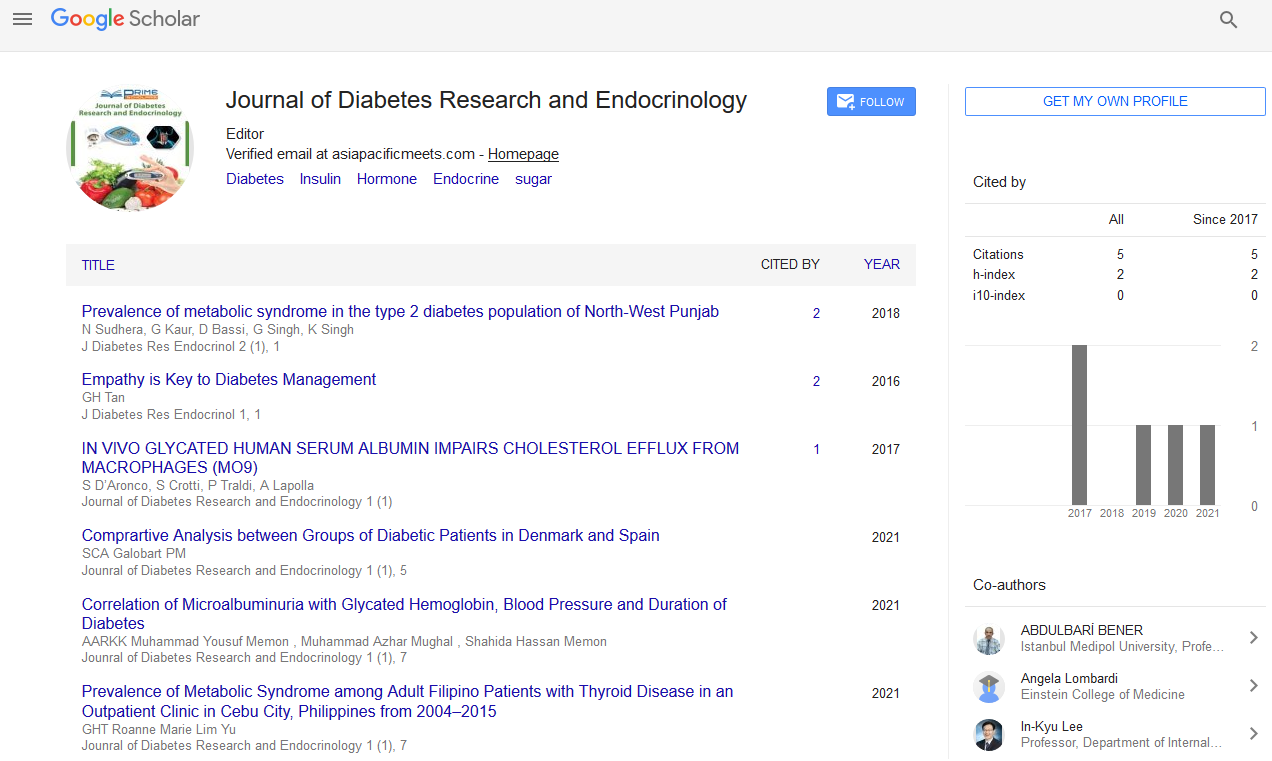Short Commentary - (2024) Volume 8, Issue 3
Understanding Nephropathy: A Silent Threat to Kidney Health
Mei Nakamura*
Department of Diabetes, Hokkaido University, Japan
*Correspondence:
Mei Nakamura,
Department of Diabetes, Hokkaido University,
Japan,
Email:
Received: 02-Sep-2024, Manuscript No. PJDRE-24-21865;
Editor assigned: 04-Sep-2024, Pre QC No. IPJDRE-24-21865 (PQ);
Reviewed: 18-Sep-2024, QC No. PJDRE-24-21865;
Revised: 23-Sep-2024, Manuscript No. IPJDRE-24-21865 (R);
Published:
30-Sep-2024, DOI: 10.36648/ipjdre.08.03.22
Introduction
Nephropathy, a term used to describe kidney disease or
damage, encompasses a range of conditions that impair the
kidneys’ ability to function properly. The kidneys are vital
organs responsible for filtering waste products from the blood,
regulating fluid and electrolyte balance, and maintaining
overall homeostasis. When nephropathy occurs, it can lead
to significant health complications, including kidney failure,
which may require dialysis or transplantation. Understanding
nephropathy is crucial for early detection and effective
management.
Description
Nephropathy can be categorized into several types, each with
distinct causes and characteristics: This is the most common
form of kidney disease, particularly among individuals with
diabetes. High blood sugar levels over time can damage the
blood vessels in the kidneys, leading to impaired filtering and
protein leakage into the urine. Diabetic nephropathy is often
progressive and can lead to end-stage renal disease (ESRD) if
not managed effectively. Chronic high blood pressure can cause
damage to the blood vessels in the kidneys, reducing their
ability to filter blood. Hypertensive nephropathy often coexists
with diabetic nephropathy, exacerbating kidney damage. This
group of conditions involves inflammation of the glomeruli,
the tiny filtering units in the kidneys. Glomerulonephritis can
be caused by infections, autoimmune diseases, or exposure
to toxins. Symptoms may include blood in the urine, swelling,
and high blood pressure. A genetic disorder characterized by
the growth of cysts in the kidneys, PKD can lead to progressive
kidney damage and ultimately kidney failure. Symptoms
may not appear until later in life and can include pain, high
blood pressure, and urinary tract infections. This condition
occurs when there is a blockage in the urinary tract, leading
to kidney damage. Causes can include kidney stones, tumors,
or an enlarged prostate. The blockage can cause pressure to
build up in the kidneys, impairing their function. Nephropathy
often progresses silently, with many individuals experiencing
few or no symptoms in the early stages. As the disease
advances, symptoms may include: Blood in the urine, High
blood pressure, Nausea and loss of appetite Diagnosis typically
involves blood tests to assess kidney function (measuring levels
of creatinine and blood urea nitrogen), urine tests to check
for protein or blood, and imaging studies to evaluate kidney
structure. In some cases, a kidney biopsy may be necessary to
determine the underlying cause of nephropathy. Management
of nephropathy focuses on slowing the progression of kidney
damage and addressing underlying causes. Key strategies
include: For individuals with diabetic nephropathy, maintaining
optimal blood sugar levels is crucial [1-4].
Conclusion
A diet low in sodium, protein, and phosphorus can help reduce
the workload on the kidneys. Consulting with a dietitian can
provide personalized dietary recommendations. Regular followups
with healthcare providers are important for monitoring
kidney function and adjusting treatment plans as necessary.
Nephropathy represents a significant health concern that can
lead to serious complications if left untreated. Early detection
and proactive management are key to preserving kidney
function and improving quality of life. By understanding the
types, symptoms, and treatment options for nephropathy,
individuals can take steps to protect their kidney health and
mitigate the risks associated with this silent condition. Regular
health screenings, particularly for those at risk, are essential in
the fight against kidney disease.
Acknowledgement
None.
Conflict Of Interest
None.
References
- Kupriyanova Y, Patricia ZO, Bobrov P, Karusheva Y, Burkart V, et al. (2021) Early changes in hepatic energy metabolism and lipid content in recent-onset type 1 and 2 diabetes mellitus. J Hepatol. 74(5):1028-1037.
[Crossref] [Google Scholar]
- Herder C, Furstos JF, Nowotny B, Begun A, Strassburger K, et al. (2017) Associations between inflammation-related biomarkers and depressive symptoms in individuals with recently diagnosed type 1 and type 2 diabetes. Brain Behav Immun. 61:137-145.
[Crossref] [Google Scholar]
- Ziegler D, Strom A, Bonhof G, Puttgen S, Bodis K, et al. (2018) Differential associations of lower cardiac vagal tone with insulin resistance and insulin secretion in recently diagnosed type 1 and type 2 diabetes. Metabolism. 79:1-9.
[Crossref] [Google Scholar]
- Roden M, Shulman GI (2019) The integrative biology of type 2 diabetes. Nature. 576(7785):51-60.
[Crossref] [Google Scholar]
Citation: Nakamura M (2024) Understanding Nephropathy: A Silent Threat to Kidney Health. J Diab Res Endocrinol. 8:22.
Copyright: © 2024 Nakamura M. This is an open-access article distributed under the terms of the Creative Commons Attribution
License, which permits unrestricted use, distribution, and reproduction in any medium, provided the original author and source
are credited.

